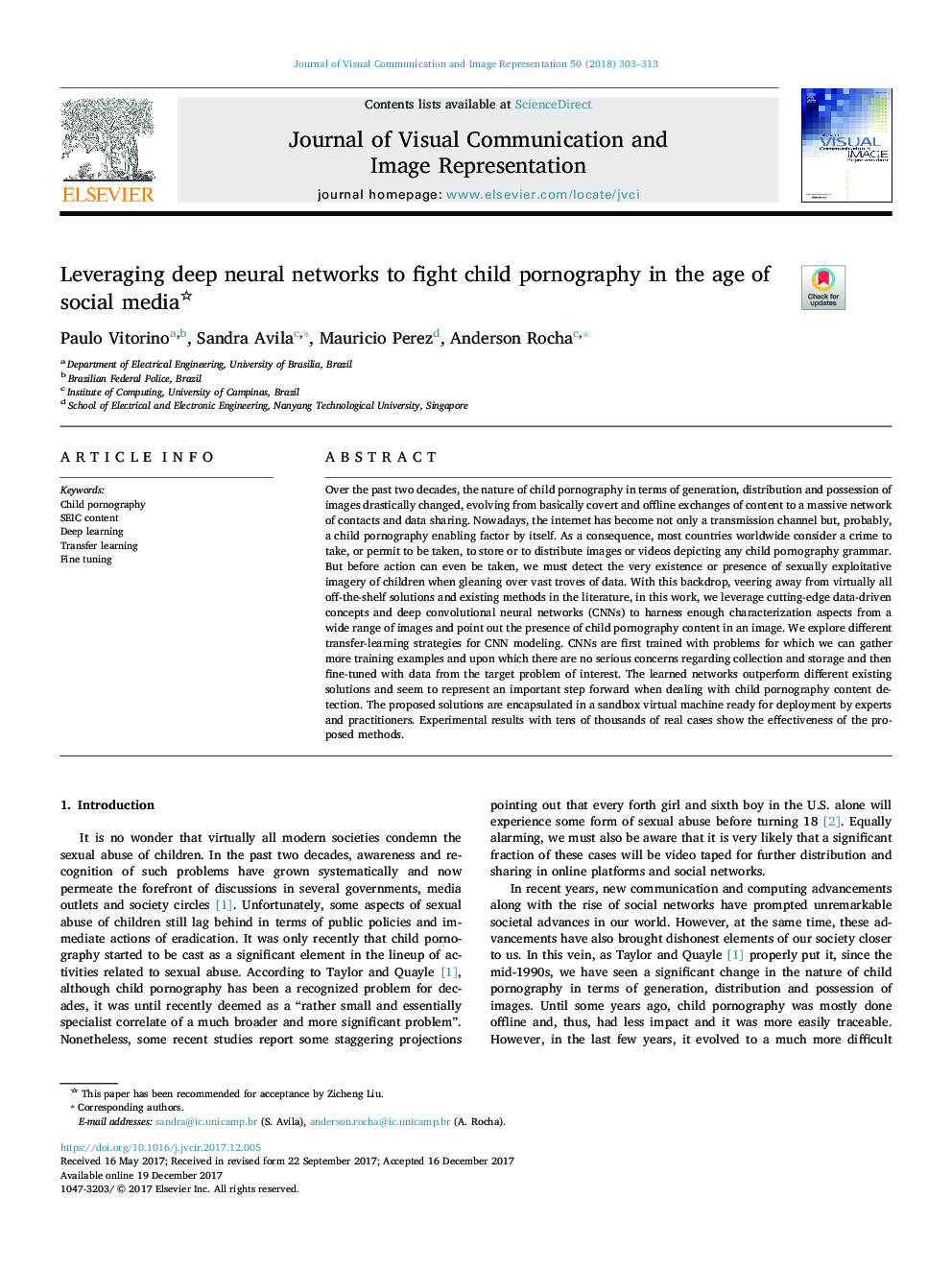| Article ID | Journal | Published Year | Pages | File Type |
|---|---|---|---|---|
| 6938393 | Journal of Visual Communication and Image Representation | 2018 | 11 Pages |
Abstract
Over the past two decades, the nature of child pornography in terms of generation, distribution and possession of images drastically changed, evolving from basically covert and offline exchanges of content to a massive network of contacts and data sharing. Nowadays, the internet has become not only a transmission channel but, probably, a child pornography enabling factor by itself. As a consequence, most countries worldwide consider a crime to take, or permit to be taken, to store or to distribute images or videos depicting any child pornography grammar. But before action can even be taken, we must detect the very existence or presence of sexually exploitative imagery of children when gleaning over vast troves of data. With this backdrop, veering away from virtually all off-the-shelf solutions and existing methods in the literature, in this work, we leverage cutting-edge data-driven concepts and deep convolutional neural networks (CNNs) to harness enough characterization aspects from a wide range of images and point out the presence of child pornography content in an image. We explore different transfer-learning strategies for CNN modeling. CNNs are first trained with problems for which we can gather more training examples and upon which there are no serious concerns regarding collection and storage and then fine-tuned with data from the target problem of interest. The learned networks outperform different existing solutions and seem to represent an important step forward when dealing with child pornography content detection. The proposed solutions are encapsulated in a sandbox virtual machine ready for deployment by experts and practitioners. Experimental results with tens of thousands of real cases show the effectiveness of the proposed methods.
Related Topics
Physical Sciences and Engineering
Computer Science
Computer Vision and Pattern Recognition
Authors
Paulo Vitorino, Sandra Avila, Mauricio Perez, Anderson Rocha,
